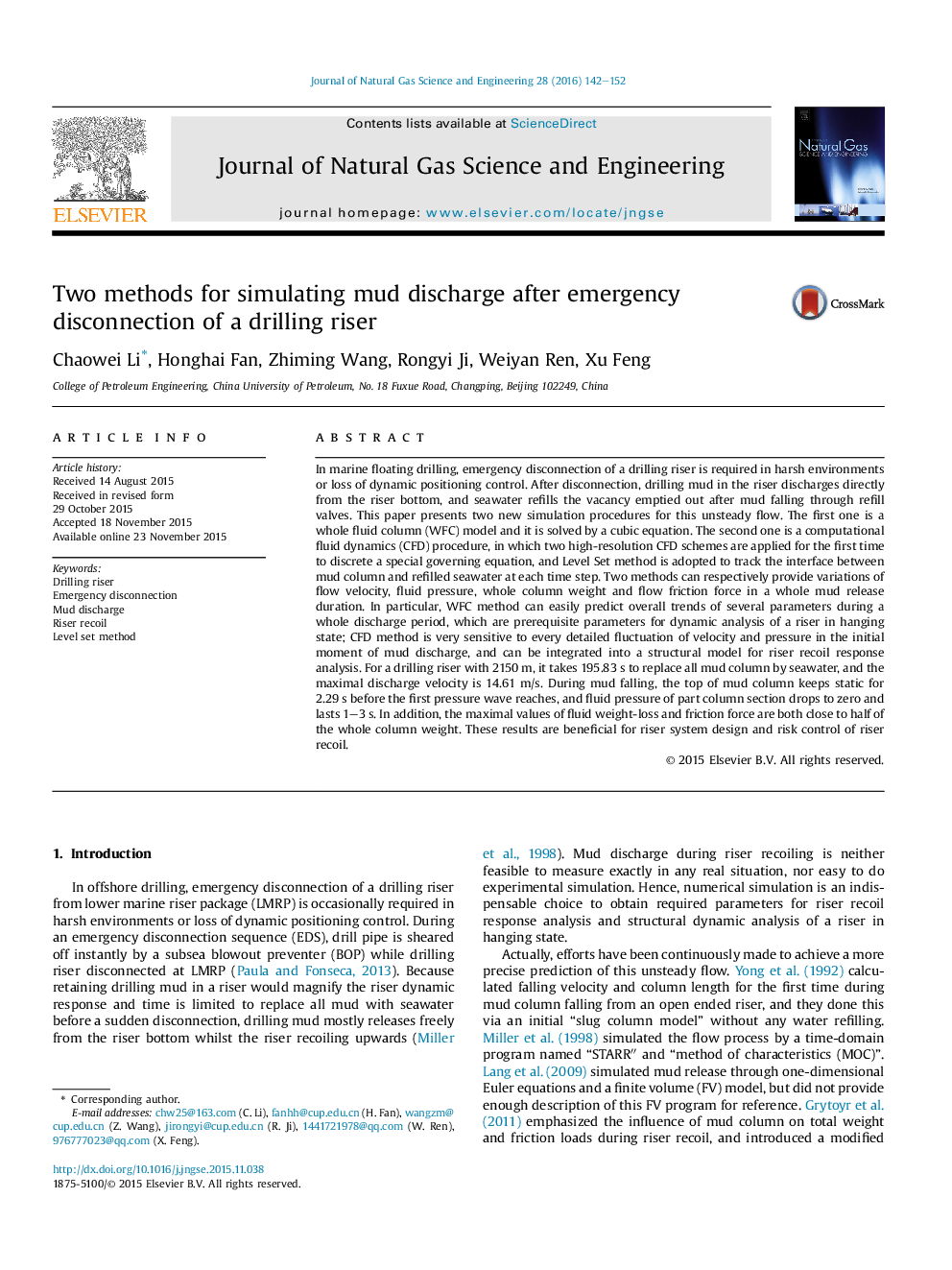| کد مقاله | کد نشریه | سال انتشار | مقاله انگلیسی | نسخه تمام متن |
|---|---|---|---|---|
| 1757277 | 1523013 | 2016 | 11 صفحه PDF | دانلود رایگان |
• Two methods for simulating mud discharge during riser recoil are proposed.
• Level Set method, WENO scheme and TVD Runge–Kutta scheme are applied.
• Two methods are useful for riser recoil response analysis and riser design.
• Column weightlessness and pressure attenu are obvious during mud discharge.
In marine floating drilling, emergency disconnection of a drilling riser is required in harsh environments or loss of dynamic positioning control. After disconnection, drilling mud in the riser discharges directly from the riser bottom, and seawater refills the vacancy emptied out after mud falling through refill valves. This paper presents two new simulation procedures for this unsteady flow. The first one is a whole fluid column (WFC) model and it is solved by a cubic equation. The second one is a computational fluid dynamics (CFD) procedure, in which two high-resolution CFD schemes are applied for the first time to discrete a special governing equation, and Level Set method is adopted to track the interface between mud column and refilled seawater at each time step. Two methods can respectively provide variations of flow velocity, fluid pressure, whole column weight and flow friction force in a whole mud release duration. In particular, WFC method can easily predict overall trends of several parameters during a whole discharge period, which are prerequisite parameters for dynamic analysis of a riser in hanging state; CFD method is very sensitive to every detailed fluctuation of velocity and pressure in the initial moment of mud discharge, and can be integrated into a structural model for riser recoil response analysis. For a drilling riser with 2150 m, it takes 195.83 s to replace all mud column by seawater, and the maximal discharge velocity is 14.61 m/s. During mud falling, the top of mud column keeps static for 2.29 s before the first pressure wave reaches, and fluid pressure of part column section drops to zero and lasts 1–3 s. In addition, the maximal values of fluid weight-loss and friction force are both close to half of the whole column weight. These results are beneficial for riser system design and risk control of riser recoil.
Journal: Journal of Natural Gas Science and Engineering - Volume 28, January 2016, Pages 142–152
